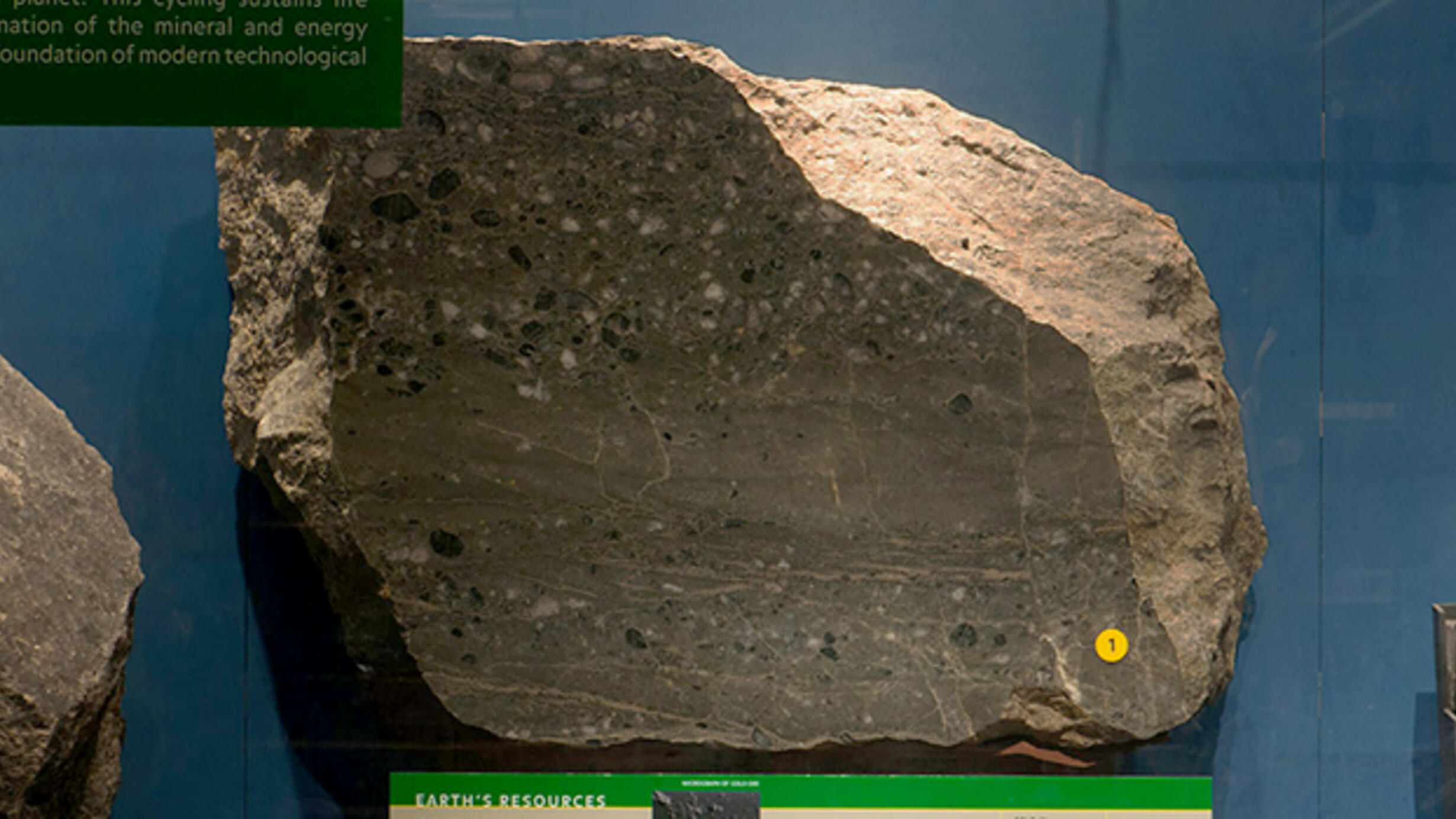Gold in conglomerate
Part of Hall of Planet Earth.
Part of Hall of Planet Earth.

Since their discovery in 1886, the Witwatersrand deposits have yielded more than 40,000 tons of gold (enough to fill this hall to a depth of 2 meters). This gold-bearing rock is a conglomerate containing rounded gray quartz pebbles in a matrix of sand, mica, and metallic sulfide minerals (including pyrite, or fool’s gold). The conglomerates were deposited 2.4 billion years ago in river channels. The dense gold particles, eroded out of quartz veins, were concentrated by the flow of water, which carried lighter particles of rock downstream. Such deposits are known as placers.